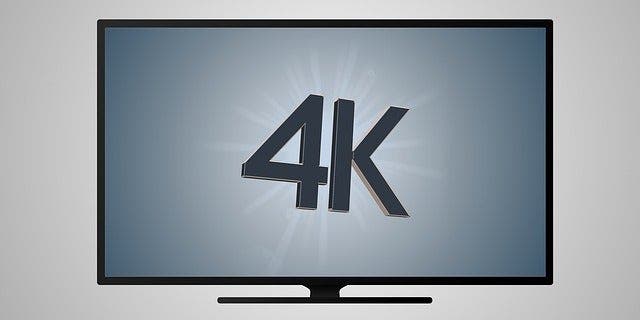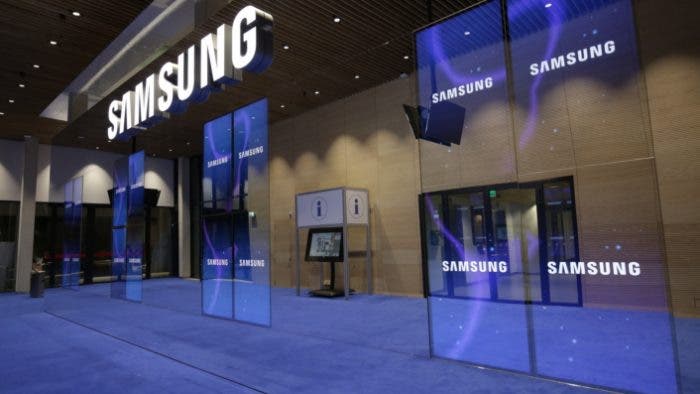According to recent information, Samsung will close all its Liquid Crystal Display (LCD) production lines by the end of this year. This includes two production lines in South Korea and two in China. However, the company will deliver all pre-existing orders before the end of the year. There are speculations that Samsung wants to shift its attention from the LCD display to QD-OLED screens. Its development plan is to focus on the production of quantum TVs and these TVs need to use QD-OLED screens. In addition, Samsung will spend $11 billion to build a factory capable of producing real QD-OLED TV screens.

So what exactly is QD-OLED?
In simple terms, flat-panel TVs are divided into LCD and OLED TVs. While the former is based on backlighting, the latter is self-emitting. LED panels and quantum dot panels have been derived on the basis of LCD panel technology.
While LCD panels use CCFL fluorescent lamps, LED TVs use LED lamps. Technically, there is no difference in picture quality between the two. However, the LEDs are more energy-efficient, have lower heat generation and are generally thinner.
As for quantum dot technology, it no longer uses white LED backlight but uses inorganic nanocrystals that can emit multiple colors as the backlight light source. It has higher color gamut coverage and more accurate colour performance. Many quantum dot TVs and monitors on the market come with 100% NTSC colour gamut and 130% sRGB colour gamut.
OLED screens use very thin coatings of organic materials and glass substrates, which emit light when current passes through them. OLED display screens can be made lighter and thinner, and at the same time, the viewing angle is also larger. The disadvantage is that there is always a risk screen burns and the cost is also very high.
What are the advantages of QD-OLED panels
As for Samsung’s upcoming QD-OLED panel, it maintains the advantages of OLED screens. Also, it uses the quantum dot technology to give the screen a high color gamut and brightness. Its working principle is the combination of quantum dots and OLED. Because the OLED in the QD-OLED panel emits only one color, it greatly reduces the manufacturing difficulty and production cost.
It also has wider color gamut coverage and higher brightness performance than OLED. Furthermore, QD-OLED panels greatly reduce the occurrence of screen burn. Simply put, the quality of QD-OLED panels can surpass OLED and the price is much lower. This is a very promising display technology.
While QD-OLED solution seems promising, it may not easily push OLED aside for the following reasons
- OLED technology has become very mature, and as the technology continues to mature, the price is gradually falling.
- At this stage, QD-OLED is still only a laboratory product. First, there is no guarantee on product quality.
- QD-OLED technology is not mature enough, mass production is not possible for now
- Because QD-OLED is a new technology, its price will still be as high as OLED even though it is supposed to be lower.






It’s still OLED so burn-in can happen which means I won’t buy it because I don’t want channels logo stay on my TV for the rest of my its life.
It’s not OLED… Quantum Dot TV’s are still LCD. You dunno what the heck you are talking about… -_-
We have an LG OLED with hundreds of hours of video games with HUDs and other static content. Not even the slightest hint of IR let alone burn in.
Neither do you? As clearly explained, QLED is, yes, LCD display tech that is not OLED. The author made no indication they’re the same thing? Not sure what article you just read.
Oof.
“While LCD panels use CCFL fluorescent lamps, LED TVs use LED lamps.”
What you should have said was “LCD TVs can use either CCFLs or LEDs as backlighting.”
“LED TVs” *are* LCD TVs. “LED TV” is a marketing spin to differentiate a CCFL backlit LCD panel from one backlit by LEDs.
Burn in can happen on any display. Ever been to the airport or train or bus station? See all the burn in on those LCDs? It’s called abuse. If you leave a static image on ANY fixed pixel display long enough, that’s what’s going to happen; most nimrods never take their TVs out of their factory default showroom (nuclear blast) brightness mode, which simply exacerbates the problem. But flipping channels? Watching a letterboxed movie for several hours. Not likely at all.
I have a 10 year old PDP. That’s right PLASMA. And it has no burn in.
As a former FPD manufactuer, thank you for mentioned IR. 👍
My family must be super unlucky I spend my time to flick between channels every advert and when gaming I change channel every 1h to give my screen a break.
But after 3 months I got burn in.
For my phone, I make sure to never leave the brightness at max 2nd I always turn the display off when, it is not in use.
And somehow I got burn in.
2 newer phones later am still getting burn.
I even whent on my dad and sister phone they both got burn in,
Looked at their older phone they got burn In
My TV is LG oled 2017 model.
My phone’s Samsung note 3,
Samsung s7 and a9
Sister s8, S10
Dad s7, Huawei P30 Pro
All of them have burn in.
Never ones have I had burn in on a Led or plasma display.
You won’t buy it because you can’t afford it!! Don’t lie like you don’t want it.
A badly researched article. Let me correct few points
“QD-OLED technology is not mature enough, mass production is not possible for now”
Correction: Samsung Panels is moving all their production to QD-OLED, so therefore, mass production definitely is possible.
Because QD-OLED is a new technology, its price will still be as high as OLED even though it is supposed to be lower.
Not really, QD-OLED is simply mix of OLED and Quantum Dot technology both are very mature. QD-OLED is a new combination of very mature technologies. And it will be MUCH cheaper than OLED.
Samsung will spend $11 billion to build a factory capable of producing real QD-OLED TV screens.
11 Billion will cover the whole cost of transition. They arent building a “new factory that costs 11 billion”.
Burn in is over-hyped, especially on the newer panels. Unless your trying to create burn in, don’t worry about it
A lot of misinformation re LCD/lLED. Respectfully LCD is the panel technology and LED is the light source. Putting a cluster of OLED & LCD tech together is Samsungs version of micro LCD light on an OLED display that’s all. Sony have it nailed with Triluminos on LG OLED panels. Samsung have great ability though with QLED so it may be a similar exercise.
I’ve had an OLED TV for a year now. On at 9am off at 2am. Use Android Chromecast image screensavers. Not even image retention. Switching it off by control power button triggers the panel protection for burn in. Sony have a good grip on burn in and image retention. Fantastic display. TV channel & Gaming logos don’t show after relatively normal usage. Take a small precaution with a screensaver and you will be fine.
Had a 55' PDP (Plasma Display Screen) for the 3D Avatar Blu-ray Disc and it just went two years before being recycled. Never seen such a bad tech, high temperature heat gas, the quickest to burn ever, as being the hottest screen ever produced, and soon disappeared from the planet, it actually was an error. A $2000 mistake, in our case. The next Avatar trilogy will be on the 50' OLED connected to the white PS5, period.